What is a Carbon Fiber Composite?
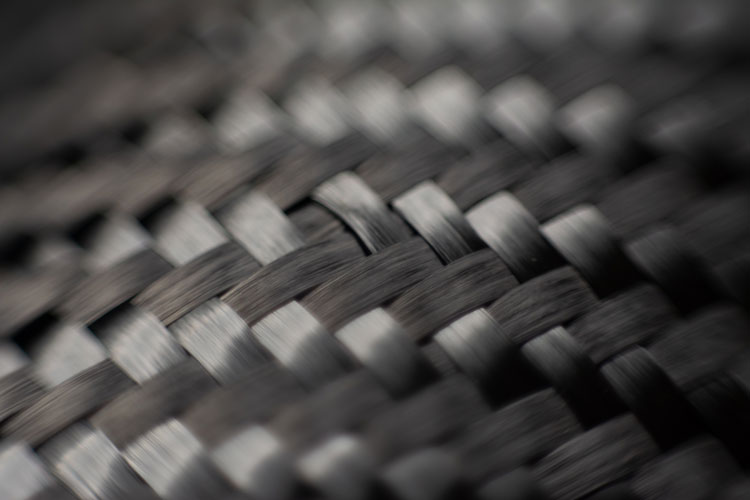
A carbon fiber composite is a combination of a fiber-reinforced reinforcing fabric and a polymer binder, such as vinyl ester or epoxy resin. The result is a composite material that has higher performance properties than either of the individual materials alone. The high-strength fabric provides the tensile strength of the final composite, whereas the polymeric binder creates a good bond with the surface and gives it structural and dimensional stability.
A structural repair using a carbon fiber component creates a stronger, lighter, and more durable alternative when compared with traditional materials like metal, concrete, wood, or fiberglass.
Technical Properties of Carbon Fiber Composite
Lightweight – Carbon fiber is 70% lighter than steel, and 40% lighter than aluminum. The optimal strength to weight ratio is achieved when a ratio of resin to fibers is optimized. An excess resin will increase the overall weight without adding structural strength.
Strength – With tensile strengths ranging from 100 – 500 KSI, carbon fiber composites can be 10 times stronger than steel. With standard and high modulus carbon fiber composites available, they also offer a repair that is perfectly suited for damaged or corroded steel. A carbon fiber component is not malleable and provides much better fatigue resistance than metallic reinforcement options.
Resistance to Corrosion – Reinforcement of metallic structures with Carbon fiber provides an alternate advantage. These composite systems provide an outstanding barrier coating to prevent further corrosion of the underlying substrate. Galvanic corrosion is always a concern when using a carbon fiber component with metallic substrates, but we have several ways to create a galvanic barrier and ensure galvanic corrosion cannot occur.
Quick Installation – The installation of a carbon fiber repair kit is fairly straightforward and often much faster than welded, metallic alternatives. Typically the substrate is prepared through grit blasting then any defects are smoothed out with a high build epoxy putty. The saturating epoxy resin is mixed and then used to wet out the carbon fabric which is applied to the structure being reinforced. The epoxy resin will cure within 24 – 48 hours and a topcoat is often applied via brush or roller. No special tools are required for structural repairs with carbon fiber.
Application Flexibility – A carbon fiber composite begins as a pliable fabric and liquid resin. The final carbon fiber component will cure around or against any size or shape on the surface being reinforced. This means one roll of carbon fiber can be applied to any size pipe, reducing required stocking levels for custom repairs. Further, most of our resin systems do not require additional heat to force cure the material.
Low Visibility — Carbon fiber can be applied to the pipe or tank surface as a strip. It is barely visible and will show up only as a small bump on the wall. It is only a fraction of an inch thick and can be painted over, making it nearly invisible.
No Maintenance – When the carbon fiber repair is completed, no further attention to the repair area is required from the maintenance team.
Low Cost – Fully installed, carbon fiber repairs are often significantly more cost-effective than other repair options. Further, the simplicity of the repair can greatly reduce the overall time required for a repair.
Longevity – A carbon fiber repair kit provides 20-year service life to the repaired structure without any required maintenance.
Industry Application of Carbon Fiber Composites
Due to its many advantages, carbon fiber is used in a large number of industries, in a variety of ways. The aviation industry, consumer, healthcare, energy, infrastructure, and construction are all industries that benefit from the advantages of carbon fiber composite materials.
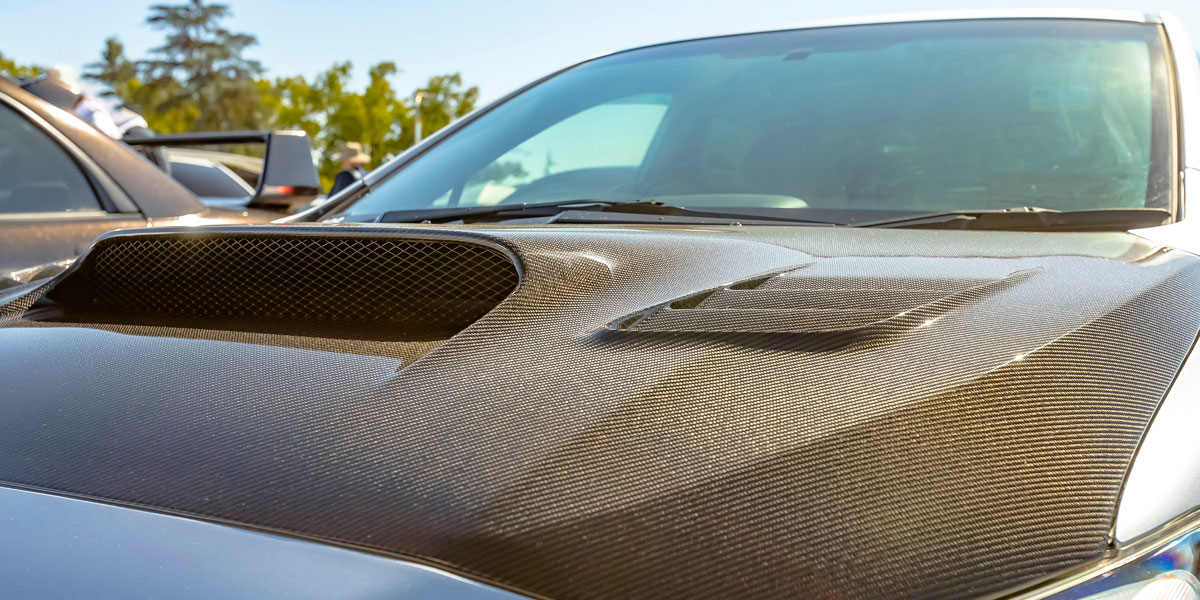
Carbon fiber is used both for cosmetics and its excellent strength-to-weight ratio in the automotive industry. Carbon fiber hoods, body panels, and even a carbon fiber door panel can be created.
Outside of automotive body panels, carbon fiber is used to create the structural spar for wind turbine blades and is even used for orthopedic external fixators. Being lightweight, it can be used for cosmetic repair or to reinforce the structural integrity of the damaged area without adding bulkiness and additional weight to it.
Composite Solutions for Corrosion, Erosion, and Structural Degradation
Carbon fiber-based composites are becoming increasingly popular for repairing structural deficiencies caused by erosion and corrosion on industrial pipes, tanks, and pressurized vessels. A multi-layer repair is required for components with through-wall failures or severe corrosion. Composite repairs designed for industrial repairs will often cure overnight and do not require full vacuum-like aerospace and automotive systems.
Due to the remarkable strength of carbon fiber and its ability to fit a variety of shapes, it can generally be used to repair damage to a pipe or tank, no matter the size, severity, location, or operating conditions. From small patches to a complete rebuild and replacement of a severely damaged pipe or tank, carbon fiber can be engineered to provide a permanent repair solution. Composite repair is applicable in a variety of industries, including Power Generation, Power Transmission, Oil & Gas, Water & Wastewater, among many others
Composite materials are also an excellent option for the reinforcement of infrastructures like beams, columns, and slabs as a replacement for traditional materials such as concrete, wood, and steel. This is largely due to the fact that composite materials are resistant to corrosion and deterioration, enabling the built structures to have a longer life span and require less maintenance than structures made from these traditional materials.
Tank Repair with Carbon Fiber
Advanced FRP Systems offers tank repair solutions for insulated tanks, water tanks, crude oil tanks, tanks that operate at elevated temperatures, and many more. Our composites are chemically resistant and can withstand microbially influenced corrosion, immersion in concentrated acids, black and white liquor, bleach, caustics, and many more aggressive chemicals.
Badly corroded, eroded, or damaged tanks can be repaired by performing full composite tank reinforcement and building a structurally independent tank inside the footprint of the existing tank. Sectional reinforcement and repairs of cracks and pinholes can often be successfully done using a composite patch.
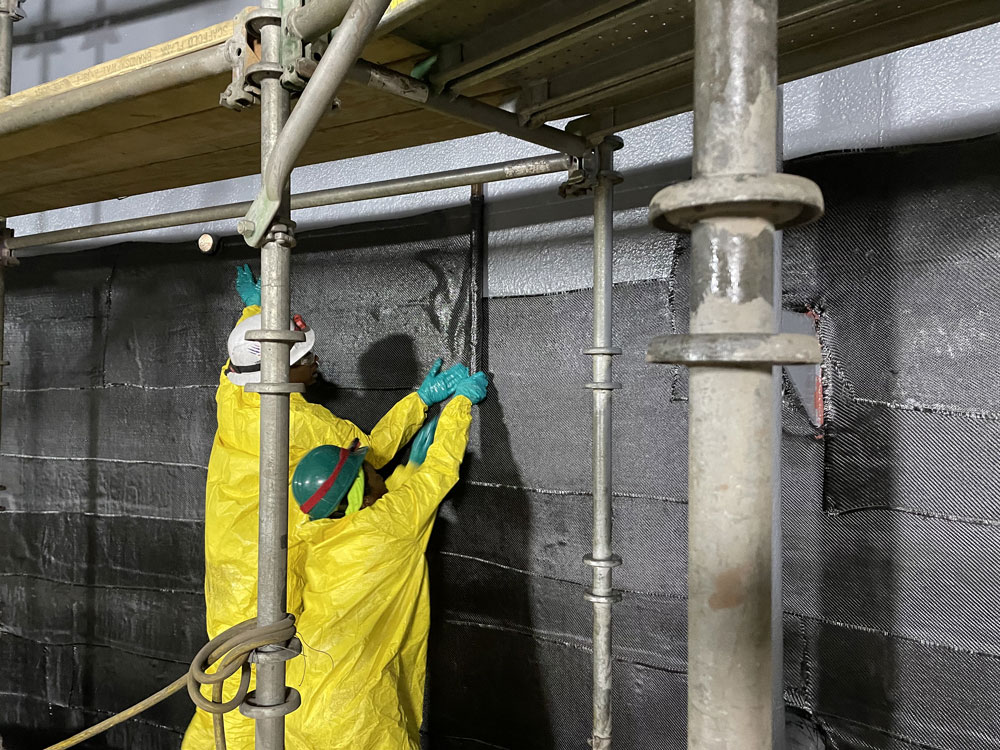
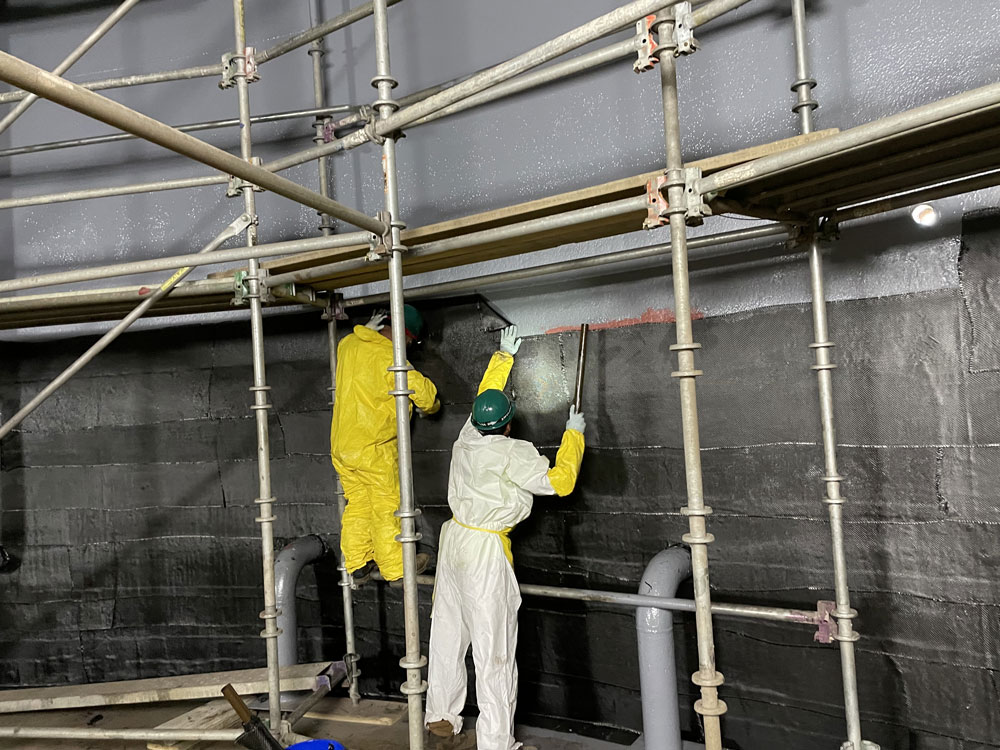
Types Of Tank Repair
-
Tank Bottom Repair
Hydrocarbon storage tanks generally have corrosion concentrated on the bottom of the tank and where the wall and floor meet. To repair these tanks, a carbon fiber sectional repair is installed that covers the entire floor and 2 – 6 feet up the side walls. The installation is easy and cost-effective and provides a long-term life extension for tanks.
-
Tank Roof Repair
Carbon fiber tank roof repairs are preventative in nature and applied to prevent leaks and through wall failures and stop any exterior corrosion from occurring. Repairs can be done either internally or externally.
-
Tank Shell Repair
Tank shells can be repaired with carbon fiber either internally or externally. When possible, an internal repair is a better solution as it prevents internal corrosion and gives more longevity to your repaired structure.
-
Spot Repairs
A composite patch is an ideal solution for tanks experiencing isolated corrosion, pinhole leaks, degraded weld seams, and even isolated, larger through-wall failures. The repair patch provides a high-strength, chemical-resistant barrier compatible with a wide range of high-performance coatings. No heat is required to cure the resin so the installation process is fast and easy. A single layer or multiple layer repairs can be installed.
Carbon Fiber Pipe Repair
Advanced FRP Systems specializes in long-lasting, maintenance-free carbon fiber repairs for industrial pipes. Our structural repair system for damaged pipes can be used for spot repairs on leaking pipes or to completely rebuild your piping system with a high-strength, corrosion-resistant carbon fiber composite pipe. In many cases, an industrial pipe can be repaired while it is still in service.
Composite pipe reinforcement is a fast and cost-effective solution that helps reduce the need for pipe replacement. It offers a longer life expectancy than typical pipe clamps, doesn’t require hot work as welded alternatives do, helps restore a distressed, degraded, damaged, or leaking pipe, and increases system reliability and availability.
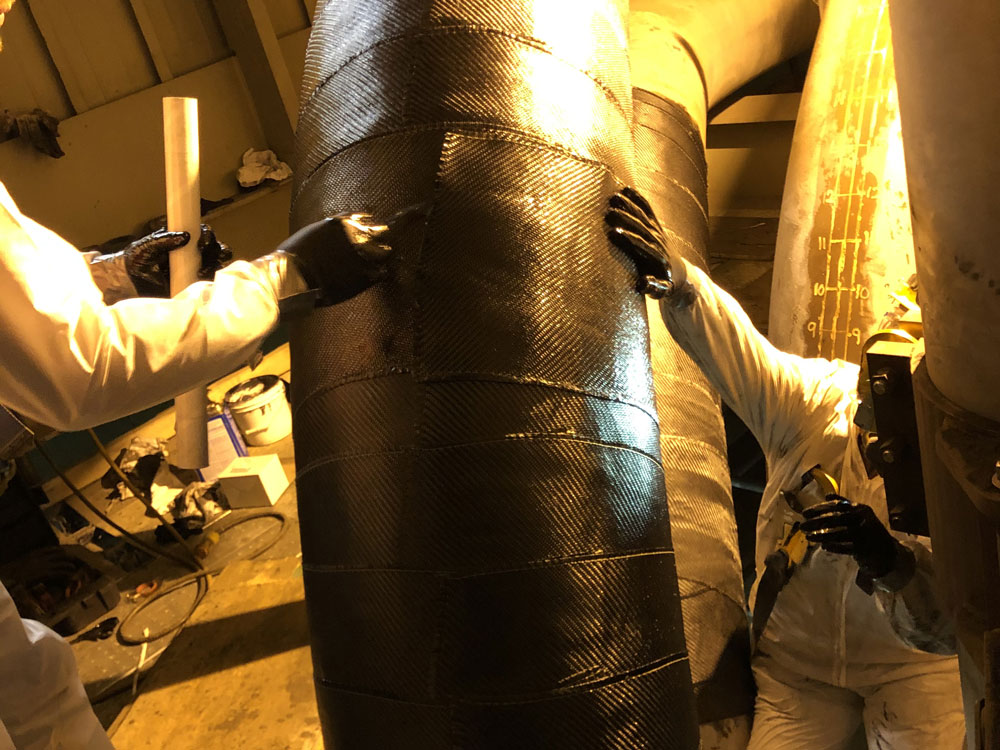
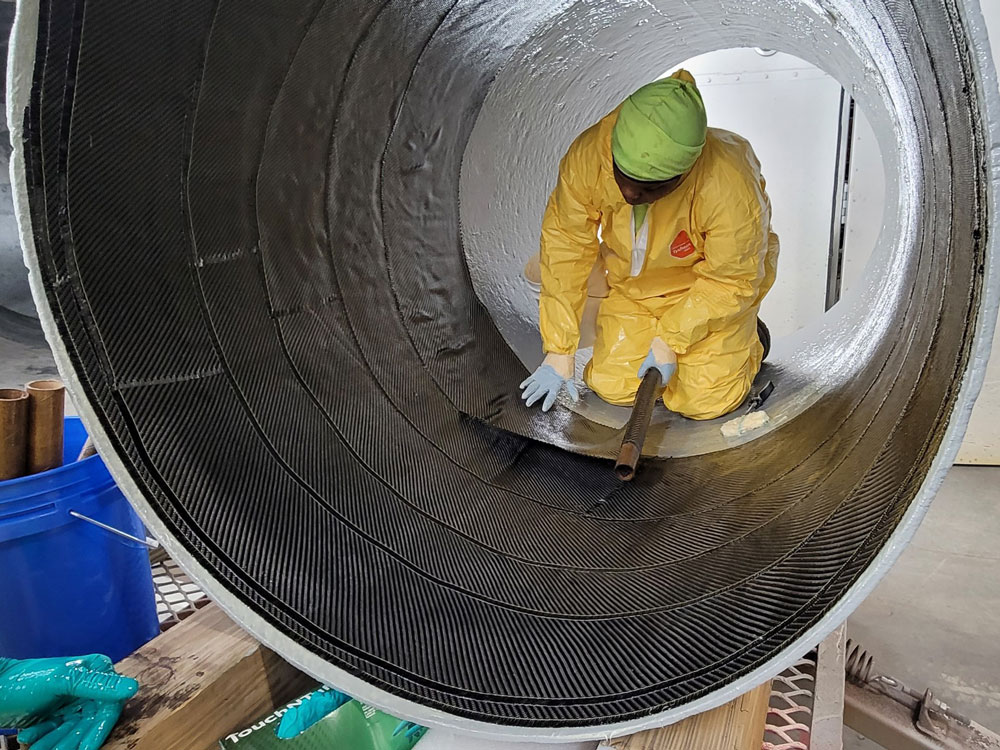
Types Of Pipe Repair
-
External Pipe Repair
If the pipe is readily accessible from the outside, an external repair of the damaged area is probably the best option. Our external wraps can fix through-wall failures up to 1,000 psi, even when caused by internal corrosion, and ensure that your pipe will not leak even if the internal coating completely fails.
We also offer Carbon Fiber Pipe Repair Kits in four sizes that are ideal for external, structural repairs of metallic, fiberglass, PVC pipe, or concrete pipes ranging from 1 inch up to 60 inches in diameter.
-
Burried Pipe Repair
Large buried pipes, above 30 inches in diameter, can be repaired internally with carbon fiber to completely eliminate the cost of excavation. Our internal pipe reinforcement systems can be designed with fewer layers to simply add structural strength to the host pipe or with more layers to build a structurally independent composite pipe within the host pipe.
-
Active Leak Mitigation for Pipes
Repair solutions for pipes that are actively leaking and cannot be taken offline can often save a plant considerable money when faced with an unexpected shutdown. Many options are available to repair active leaks depending on the pressure, temperature, size of the defect, and material within the pipe. Advanced FRP specializes in repairs on active leaks and we can help design a repair process for almost every scenario.
Concrete and Structural Repair with Carbon Fiber
Composite technology can be effectively used in the building and construction industry that requires strength and durability– specifically in bridge support, support beams, and concrete reinforcement.
Compared to traditional steel used in concrete reinforcement and infrastructure applications, carbon fiber composites offer higher tensile strength, lower density, and more versatility in end-use applications.
The physical and mechanical properties of carbon fiber when combined with an epoxy resin are perfectly suited for strengthening infrastructure. The fibers can be oriented axially to increase the flexural strength or the fibers can be woven into a bi-directional sheet to combine flexural and shear strengthening. The fatigue resistance and adhesion value of these composites make them the only way to economically rebuild and reinforce many badly degraded structures
The superior strength, low weight, corrosion resistance, and ability to adhere to concrete make carbon fiber composites an excellent material for crack prevention, crack reinforcement, beam strengthening, seismic upgrading, strengthening after structural modifications, concrete spalling, and so much more.
Advanced FRP Systems offers innovative, customized structural repair solutions ranging from reinforcement of corroded I-beams and rebuilding concrete pillars to repairs of off-shore and tidal zone pilings.
Have Questions about Composite Solutions?
At Advanced FRP Systems, we offer turnkey composite solutions to problems with erosion, corrosion, and structural deficiencies for clients around the globe.
If you have any questions about carbon fiber design and application or want to learn more about our expertise and how we can help, feel free to reach out.
X
